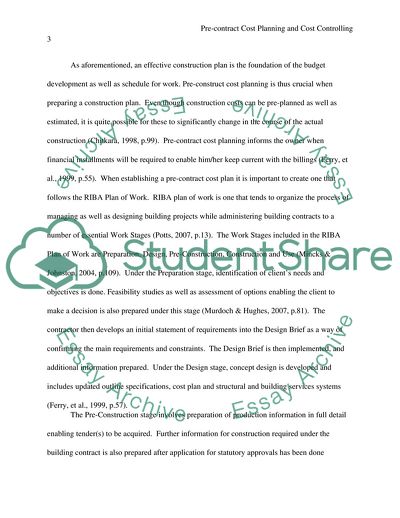Cite this document
(Pre-Contract Cost Planning and Cost Controlling Coursework Example | Topics and Well Written Essays - 2250 words, n.d.)
Pre-Contract Cost Planning and Cost Controlling Coursework Example | Topics and Well Written Essays - 2250 words. https://studentshare.org/engineering-and-construction/1770015-pre-contract-cost-planning-and-cost-controlling-riba
Pre-Contract Cost Planning and Cost Controlling Coursework Example | Topics and Well Written Essays - 2250 words. https://studentshare.org/engineering-and-construction/1770015-pre-contract-cost-planning-and-cost-controlling-riba
(Pre-Contract Cost Planning and Cost Controlling Coursework Example | Topics and Well Written Essays - 2250 Words)
Pre-Contract Cost Planning and Cost Controlling Coursework Example | Topics and Well Written Essays - 2250 Words. https://studentshare.org/engineering-and-construction/1770015-pre-contract-cost-planning-and-cost-controlling-riba.
Pre-Contract Cost Planning and Cost Controlling Coursework Example | Topics and Well Written Essays - 2250 Words. https://studentshare.org/engineering-and-construction/1770015-pre-contract-cost-planning-and-cost-controlling-riba.
“Pre-Contract Cost Planning and Cost Controlling Coursework Example | Topics and Well Written Essays - 2250 Words”. https://studentshare.org/engineering-and-construction/1770015-pre-contract-cost-planning-and-cost-controlling-riba.


